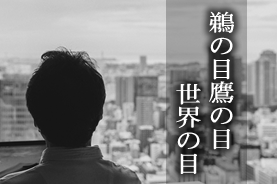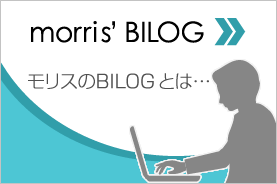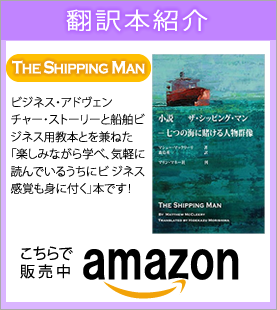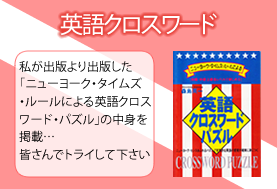
モリスのBILOG万葉紀行は「万葉の心」(Soul and spirit of Man-Yoh)を外国の人々に伝える“MAN-YOH-SHUH”
TABLE OF CONTENTS

Volume-1of the original Man-Yoh-Shuh: Poems Mostly with General and Versatile Themes (“Zohka”)and often attributed to Imperial Court Figures.
☆Princess Nukata’s poem
☆Emperor Tenmu’s poem
☆Empress Jito’s graceful poem
☆Kakinomoto-no Hitomaro’s poem
☆Kakinomoto-no Hitomaro’s poem (1-42)
☆Prince Naka-no Oh-e’s poem (1-15)
☆Isonokami-no Ohmaetsukimi’s poem (1-44)
☆Kakinomoto-no Hitomaro’s poem (1-48)
☆Takechi-no Kurohito’s poem (1-58)
☆Yamanoue-no Okura’s poem (1-63)
Volume-2: Love Songs (Sohmonka) or Elegies (Banka) often attributed Court Figures.
☆Ootomono Sukune’s poem (2-101)
☆Answer song by Koseno Iratsume (2-102)
☆Emperor Temmu’s poem (2-103)
☆Fujiwara-no Bunin’s poem (2-104)
☆Prince Ohtsu-no Miko’s poem (2-109)
☆Princess Tajima-no Himemiko’s poem (2-115)
☆Princess Tajima-no Himemiko’s poem (2-116)
☆Kakinomoto-no Hitomaro’s love song (2-133)
☆Kakinomoto Hitomaro The Courtier’s poem (2-136)
☆Prince Hozumi’s elegy for Princess Tajima (2-203)
☆Arima-no Miko (Prince Arima) ‘s poem (2-141)
☆Yamanoue-no Okura’s poem (2-145)
Volume-3: Poems supplementary to above two items.
☆Kakinomoto Hitomar’s poem: (3-266)
☆Takechi-no Muraji Kurohito’s poem created during his trip (one of eight): (3-270)
☆Another poem of Kurohito: (3-271)
☆Ishikawa-no Wotoiratsuko’s poem: (3-278)
☆Yamabe-no Sukune, the Lord, Akahito’s poem: (a Chohka = Long Verse) (3-317)
☆Yamabe-no Sukune(Lord) Akahito’s poem: (a Tanka = Short Verse) (3-318)
☆Ono-no Oyu’s poem: (3-328)
☆Yamanoue-no Okura’s poem: (3-337)
☆Dazai Outpost Office Chief The Lord Ootomo-no Tabito’s poem:One of 13 odes to Sake: (3-338)
☆Lord Ootomo-no Tabito’s poem – another of the series: (3-339)
☆Yamabe-no Akahito’s poem: (3-432)
☆Yamabe-no Akahito’s poem: (3-433)
☆Ootomo-no Yakamochi’s poem: (3-464)
Volume-4: ditto plus Love Songs and Answer Songs (Hanka).
☆Nukata-no Ookimi’s poem: (4-488)
☆Hitachi Otome’s poem: (4-521)
☆Fujiwara-no Maro’s poem: (4-524)
☆Isotari’s poem: (4-568)
☆Yasu’s poem: (4-569)
☆Yasu’s another song:(4-570)
☆Ootomo-no Yotsutsuna’s poem: (4-571)
☆Kasa-no Iratsume’s poem: (4-607)
☆Kasa-no Iratsume’s poem: (4-608)
☆Ootomo-no Sakanoue-no Iratsume’s poem: (4-661)
☆Nakatomi-no Iratsume’s poem: (4-676)
☆Sakanoue-no Ohowotome’s poem: (4-731)
☆Ootomo-no Sakanoue-no Itsurame’s poem: (4-735)
☆Ootomo-no Yakamochi’s poem: (4-741)
☆Ootomo-no Yakamochi’s poem: (4-751)
Volume-5: poems centering on Dazaifu District Government Office.
☆Yamanoue-no Okura’s poem: (5-797)
☆Yamanoue-no Okura’s poem: (5-798)
☆Yamanoue-no Okura’s poem: (5-803)
☆Commander of Dazaifu Government,Ootomo-no Tabito’s poem: (5-822)
☆Yamanoue-no Okura’s poem: (5-893)
Volume-6: poems centering on Imperial Court.
☆Yamabe-no (Sukune) Akahito’s poem: (6-919)
☆Yamanoue-no Okura’s poem: (6-978)
☆Kino-Kahito’s poem: (6-991)
Volume-7: poems often relating to travel.
Volume-8: Seasonal poems.
☆Shiki-no Miko’s ode : (Vol.8-1418)
☆Ootomo-no Yakamochi’s poem: (Vol.8-1424)
☆Yamabe-no Akahito’s poem: (8-1427)
☆Ootomo-no Yakamochi’s poem: (8-1441)
☆Ootomo-no Sakanoue-no Iratsume’s poem: (8-1447)
☆Yuhara-no Ookimi’s poem: (8-1552)
☆Ootomo-no Fumimochi’s poem: (8-1587)
☆Kose Asomi Sukunamaro’s poem: (8-1645)
Volume-9: poems of travel and legends and folklore.
☆Takahashi Mushimaro’s poem: (9-1757)
☆Takahashi-no Mushimaro’s poem: (9-1808)
Volume-10: Seasonal poems.
☆Poet’s name unknown (probably a female): (10-1966)
☆Poet’s name unknown: (10-2233)
☆Poet’s name unknown: (10-2240)
☆A poem from Hitomaro Collection: (10-2315)
Volume-11: Love Songs and Answer Songs.
☆Poet’s name unknown: (11-2655)
☆Poet’s name unknown: (11-2706)
Volume-12: ditto
Volume-13: mostly Choka (Long Songs).
Volume-14: Poems sung in Eastern country-side Provinces (“Azuma-Uta”)
☆Poet’s name unknown: (14-3349)
☆An "Eastern Song": (14-3364)
☆Poet’s name unknown: (14-3386)
☆Poet’s name unknown: (14-3387)
Volume-15: miscl.
Volume-16: miscl.
☆Poet’s name unknown: (16-3807)
☆Poet’s name unknown: (16-3853)
Volume-17: poems attributed to Ootomo-no Yakamochi and his relations (up to Vol.20).
☆Ootomo-no Yakamochi’s poem: (17-4024)
Volume-18: poems about life in Etchuu Province (today’s Toyama Pref. and vicinity).
Volume-19: miscl.
☆Ootomo-no Yakamochi’s poem: (19-4139)
☆Ootomo-no Yakamochi’s poem: (19-4292)
Volume-20: some poems by Sakimori soldiers included.
☆Ujibe-no Kurome’s poem: (20-4417)
☆Ootomo-no Yakamochi’s poem: (20-4516)
(This sorting is as per Mr. Nakanishi’s book)
万葉紀行 英語版スタート!

A JOURNEY THROUGH A CLASSIC POETRY COLLECTION, “MAN-YOH-SHUH”
PREFACE
Have you heard about “Man-Yoh-Shuh”? It literally means “Collection of Ten Thousand Leaves”, and it points to not really ten-thousand, but about 4,500 poems created and sung during 6th to 7th centuries, said to have been chiefly compiled by Ootomo-no Yakamochi, a high Government officer and himself a conspicuous poet. The original book of this Collection has not ever been found anywhere anytime, but a number of handwritten copies were produced at different points in time after the original period, and remain in later times up till now.
It is a collection of poems (Chohka = Long Poem, and Tanka = Short Poem, – “Waka” in all, or “Japanese Songs”, literally) made by all the different people – different in social statuses, professions, genders, and sometimes anonymous – and “different people” include Emperors and Empresses, Nobilities and high-ranking government officers, consorts, soldiers, farmers and others. In that, I think Man-Yoh-Shuh is a truly unique literature work – unique in the world.
In this year, 2019 of the Western calendar year counts, a new era has started according to Japanese cultural heritage, and the name for the new era was proclaimed by the incumbent government as “Reiwa Jidai = Reiwa Era”. Any one Japanese Era is dedicated to each one Emperor or Empress, ruling, or sitting as symbol of, the state.
The word “Reiwa” is written with Chinese Characters (which were imported from China in the ancient times and since have been used in Japan traditionally for all the phases of life – literature, daily life, schooling, business, politics, and simply everything!) as 「令和」.
Each and every (mostly) Chinese Character (kanji) has a meaning one way or another (ideograph, as opposed to phonogram like alphabets), and Rei-wa means “Beautiful (Graceful) Harmony”, and is said to be taken from a graceful scene described in Man-Yoh-Shuh. A plum-flower viewing party was held each year at the start of the year in January or February, just ahead of cherry blossom season in March to April, at Dazaifu in norther part of Kyushu (now Fukuoka Pref.), which was an important (politically as well as culturally) front to deal with foreign affairs and cultural exchange with neighboring states in Continental China and Peninsular Korea.
Ootomo-no Tabito, father of Yakamochi, presided over a party and wrote an introductory greeting, introducing a group of poems created and announced by the people attending the party, and the whole scene was recorded in Man-Yoh-Shuh, and in this greeting he used poetic words including “Rei” (令) and “Wa” (和), and it is reported that scholars, Mr. Nakanishi Susumu in particular, made a recommendation to use these characters to form the name of the new era.
Suddenly, Man-Yoh-Shuh is receiving a lot of attention and popularity.
Preceding to the start of the new era, I had found interest in “Atmospheric Translation” (AT) (pardon my own coined expression!) of Japanese songs and poems, old and new, including Tankas, and listed some of them (firstly Japanese popular songs and folk songs) in my BILOG (Bilingual Log) (http://morishiplan.com ), and now decided to post AT’s of Man-Yoh-Shuh poems also on the same BILOG, so that friends who have interest in Japanese culture such as Tanka may understand better by reading Japanese texts as well as English versions of them.
Myself, I am not a linguist nor a literature scholar, but only a layman, or a dilettante, having keen interest (and perhaps pretty good experience) in liaising between Japanese/Asian culture and Western (English-language oriented) culture, wanted to show that Japan has a beautiful array of cultural heritage items – Tanka, Haiku, Historic tales, Novels, popular songs, folk songs, school songs, and hopefully people world over may enjoy reading and singing some of them, or even trying to make some Tankas and Haikus themselves.
I relied a lot on modern-time books and other media about Man-Yoh-Shuh as sources of interpretation of detailed meanings and the background of the poems and poets listed there in Man-Yoh-Shuh, and listed the sources and books with such precious information and guidance (all written in Japanese, of course) at the top of this piece of work, “Journey through Man-Yoh-Shuh”.
All the poems listed in this work were, in the original, created in Japanese language with the help of the already-then-available Chinese Characters during and around 7th century, and the language and words used there are, of course, all beautifully archaic, but in my AT’s, I used the mostly present-day English way of writing, although sometimes a mixture of colloquial and literary styles is employed.
I displayed the original Japanese language version of each poem, so that those capable of reading some archaic Japanese words may enjoy the comparison between the original and the AT’s. I also added the alphabetic writing of the original poems before the translation for those who may be interested.
I say AT (Atmospheric Translation), because I thought that translating Japanese poems on a word-to-word basis would be no fun to anybody – to you or to me! I struggled to express the words and phrases in each poem as loyally as possible but with some slight alterations which I believed would be best for the artistic atmosphere of the poem, and for the intent of the poet, and with some rhyme schemes built in to each poem, yet keeping as much as possible the phonetic structure of Tanka which is 5-7-5-7-7 syllables.
Furthermore, I’d like to add two things –
1.I live in Ichikawa City, Chiba Pref., and my apartment is situated in an area called Mama in the City. This area, Mama, looks to be quite an old place, as the name Mama appears in many poems of Man-Yoh-Shuh, especially connected to Maiden Tekona with a tragic folk tale, even preceding 7th century.
I live in a “mansion” (Japanese name for “apartment”, but far from mansion in the true sense of the word!?, although I love living there ) up in the forest of Mama-San, or Mama-Hill, and adjacent to our place is “Guhohji” Temple, a Buddhist temple with sublime structures and woody surroundings. There is a paved road below the temple (mostly pedestrian, but allowed for residents along to drive carefully), and on both sides of the road along starting below the stone stairs (going up to the temple grounds), leading on to the downtown, there are about a dozen panels pinned on the face of the house walls here and there. On each panel, a different piece of poem is written artistically with Japanese calligraphy brushes by different calligraphers, and all these poems are the ones quoted from Man-Yoh-Shuh, and perhaps half of them are the poems singing about local things like Mama Hill, Mama Inlet, Mama’s Plank Bridge and Mama’s mythical maiden Tekona. So, Mama as a whole and this road named Daimon Dohri Street seem to be popular visiting places for history- and poem-lovers.
I will be putting up photos of such panels on this essay here and there, as it fits.
2.It is not Mama alone that Man-Yoh-Shuh allocates stages to. Its poems go to different places all over Japan – many places other than Nara (the main stage) will join as the sites of the poems. Some of the locations you may find later will be Dazaifu in Kyushu, Toyama in Northeast of Tokyo, Shizuoka near Mt. Fuji, Shiga Pref. near Kyoto, etc., etc. Kyoto in itself was yet to come appearing in Japan’s historical chronology, and you will find interesting to meet up with various places which had been prospering, or at least thriving with people’s life, before Kyoto’s age came. You may have a peek in how Japanese people lived in such ancient times.
So, you are welcome in joining my Journey Through Man-Yoh-Shuh on this BILOG, and you may even venture out yourself in actually visiting those places which are described as the backdrops and scenes for the poems. I will let you know with a hint and guide as each chance comes up. ―――
主要な典拠
小川靖彦氏著「万葉集 - 隠された歴史のメッセージ」
多田一臣氏編「万葉集ハンドブック」三省堂
中西進氏監修「図解雑学 楽しくわかる万葉集」ナツメ社





